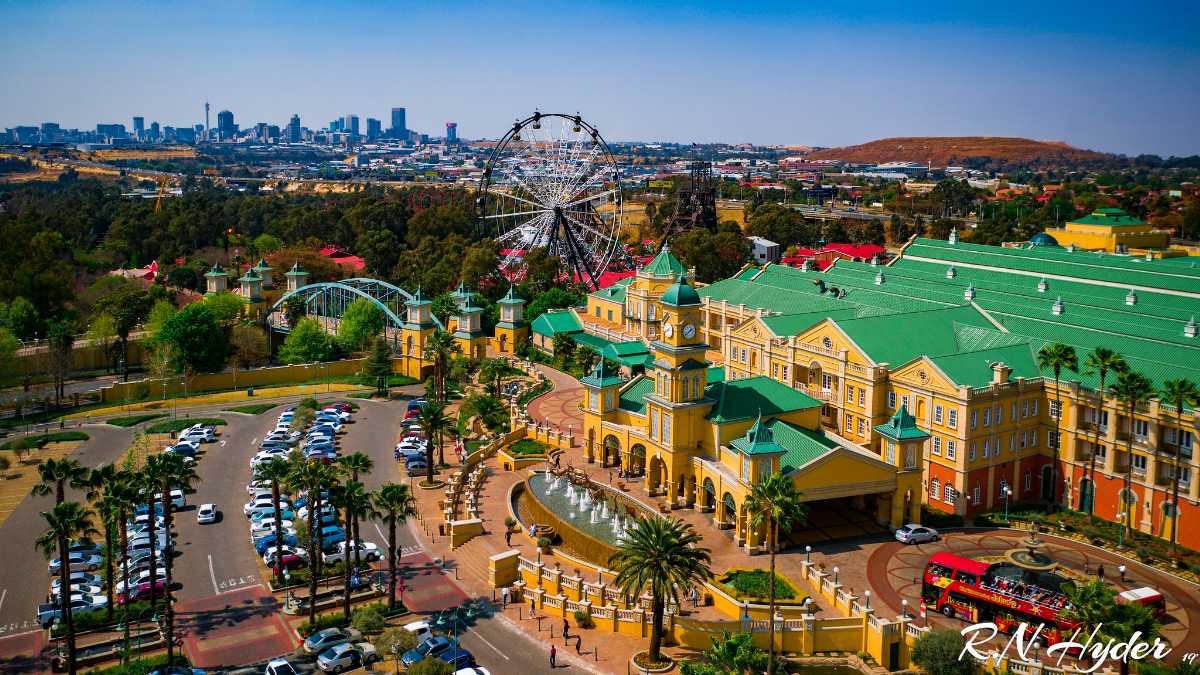All About Johannesburg North Attractions
All About Johannesburg North Attractions
Blog Article
The Greatest Guide To Johannesburg North Attractions
Table of ContentsThe Johannesburg North Attractions DiariesThe 6-Second Trick For Johannesburg North AttractionsFacts About Johannesburg North Attractions RevealedHow Johannesburg North Attractions can Save You Time, Stress, and Money.Johannesburg North Attractions for BeginnersLittle Known Facts About Johannesburg North Attractions.
The city grew on the edge of the Witwatersrand Main Reef, a below ground stratum of gold-bearing quartz-silica empire that arcs for hundreds of miles underneath the Highveld - Johannesburg North attractions. Most of the gold mines in the city ceased operation in the 1970s, however in its day the Witwatersrand gold market accounted for more than 40 percent of the world's annual gold manufacturing.Johannesburg has a temperate environment. The city appreciates concerning 8 hours of sunlight per day in both winter season and summer.
What rain the city obtains falls almost exclusively in the summer season, commonly in spectacular late-afternoon electric tornados. Air contamination postures a substantial problem, specifically in the winter season, when thermal inversions hinder the westward flow of air from the Indian Sea. Pollution is most extreme in the densely worked out Black townships on the city's periphery, where several citizens still rely upon coal for fuel.

Some Known Questions About Johannesburg North Attractions.
The equilibrium of the city is inhabited by whites. Holiday accommodation differs in character and high quality. Soweto is infamous for its countless rows of municipally constructed, two-room matchbox homes, yet it also has a few thriving territories in addition to brimming squatter camps, where tens of thousands live without water, electrical power, or sanitation centers.
Physical growth, although rather restricted by transportation, proceeded rapidly as migration to South Africa, and Johannesburg particularly, increased drastically. This problem was addressed in the 1930s when the vehicle was presented in automation to South Africa. Vehicles were, generally, confined to the well-off, and permitted them to relocate to the north of the city and commute right into the centre.
Most bad residential areas were mixed, with poor blacks and whites cohabiting, although the affluent residential areas were usually scheduled for whites. This transformed with the election of the National Party in the 1948 elections, who began to formalise the system understood as apartheid. Apartheid formally designated which suburbs each race might live in under the Team Areas Act.
The previous system of eleven numbered regions was reorganised in 2006. Marshalltown, as seen from the top of the Carlton Centre. The M1 and M2 run behind the buildings, and the southern residential address areas expand past the freeway boundary. The central city of Johannesburg is situated within the city's Region F. The number of individuals living in the internal city on an informal basis is unknown, as several are unlawful immigrants. The unemployment, education and learning, and age profiles of the location are all unknown, due to the problem of obtaining dependable details regarding the area.
Johannesburg North Attractions Fundamentals Explained
Yeoville and Bellevue have a mix of apartment and solitary property systems Your Domain Name on small whole lots. The region is located on a hilly divide that ranges from eastern to west. The most noticeable geographical attribute is Observatory Ridge, which is called for the huge observatory situated on it. The entertainment spaces are no more used, because of safety problems.

More About Johannesburg North Attractions
R. Tambo International Flight Terminal). The eastern residential areas are some of the earliest areas of Johannesburg, there are large communities of Jewish and other European histories, the majority of the population is English speaking. There are three golf links along with a variety of safeguarded ridges with viewsites. There are numerous well-developed and up-market home entertainment and purchasing areas in the eastern such as the Eastgate Shopping Center and the Greenstone mall.
Originally built to house male migrant employees, many have been boosted as homes for pairs and families. The suburb was not historically enabled to create employment centres within the area, so virtually all of its residents are commuters to other parts of the city.
Not known Factual Statements About Johannesburg North Attractions
The residential locations in the northern suburbs are click here for more info generally formal, with no substantial locations of informal housing, or housing that does not have a long-term structure. This is a recognized location, there is a trend of land use adjustment from residential to industrial, particularly along main arterial roadways and around established nodes.
Roads to the east and west are much less well created, as there are no freeways travelling in that instructions. Towards the north border of the city, the thickness of development reduces, leaving huge areas of primitive land around Midrand.
The Only Guide to Johannesburg North Attractions
, which is located on a hillside overlooking the internal city and Hillbrow.
Report this page